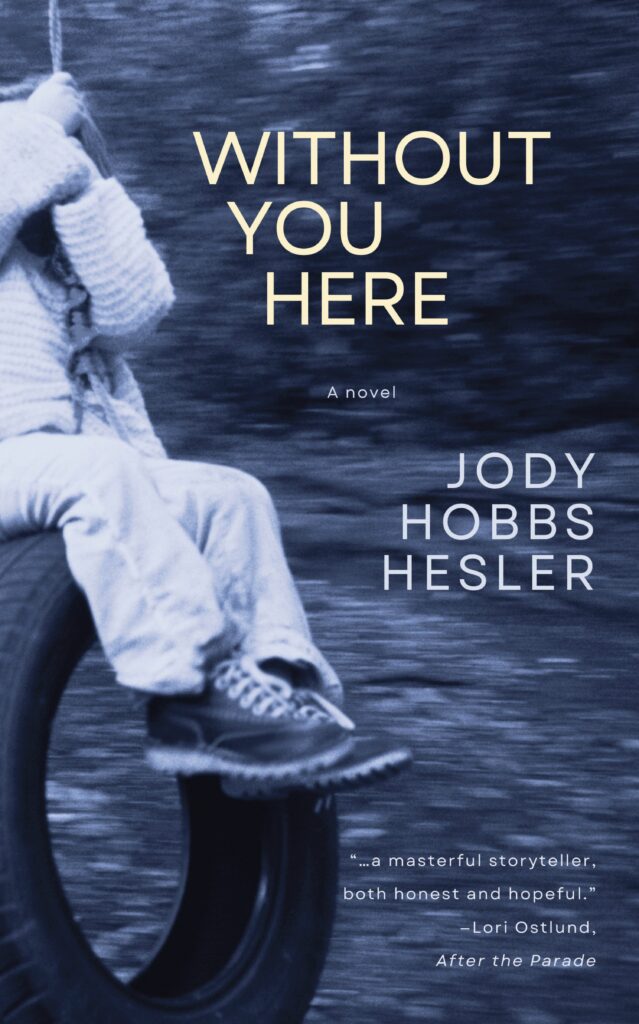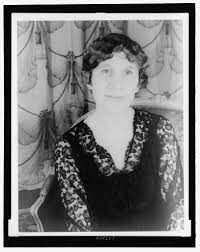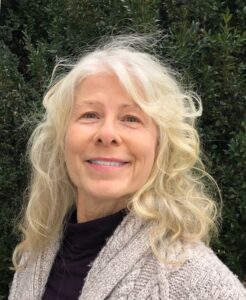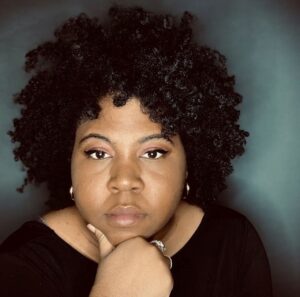
This interview is reprinted with permission from Work in Progress (www.workinprogressinprogress.com)
Give us your elevator pitch: what’s your book about in 2-3 sentences?
THE BOOK OF LOSMAN is about a literary translator in Copenhagen with Tourette Syndrome who becomes involved in a dubious and experimental drug study to retrieve his childhood memories in a tragicomic effort to find a cure for his condition.
Which character did you most enjoy creating? Why? And, which character gave you the most trouble, and why?
Daniel P. Losman—who goes simply by Losman—was very much a fun character to write. I’ve written 7 completed manuscripts over the past 30 years, five novels and two collections of stories (there were more manuscripts I simply abandoned). Nearly all of those manuscripts contain stories and characters that involve background research. This is especially so with one manuscript, a retelling of Beowulf set in the Southern Tier region of New York State. I spent 10 years writing that book, which is called IN THE COUNTRY OF MONSTROUS CREATURES. To do it properly, I had to read and reread Beowulf, I had to research the process of fracking (which plays an outsize role in the novel), and I had to invest a great deal of time learning more about this region of the state. I am from New York State—I love New York!—but I grew up in the Finger Lakes. There are great differences between these regions. Since I was after a certain degree of verisimilitude, research was necessary.
I pitched agents and eventually signed with one who loved the Beowulf retelling. He shopped it around and I got a lot of wonderful responses from major editors and publishers, though all of which were, ultimately, rejections. So I ended up giving up on the novel. Now it’s just a lonely Word doc on my laptop. I mention all this because, with The Book of Losman, I wanted to tell a simpler story, one that didn’t take a decade to finish or force me to spend countless hours doing research. I felt I knew Losman from the start. The two of us share some commonalities. He is a literary translator with Tourette, like me, and because of this his character traits slotted into place rather easily. Also, he lives in Denmark as I once did. Losman is not me, far from it. But because my life experiences are close to his, I didn’t have to do as much research. As a result, I was able to write the first draft in less than two years.
The hardest character for me to write was Losman’s crush, Caroline Jensen. She’s an artist, and a bit of an odd duckling. I had to figure out a way to create her character without resorting to caricature. I didn’t want to write a story with a traditional romance, either, so there’s this awkward tension between them throughout the novel. Balancing that tension took some effort.
Tell us a bit about the highs and lows of your book’s road to publication.
One interesting tidbit: this book actually started as a memoir. But the writing felt forced, and I limped along, not certain how to go about putting together a memoir. Besides, I kept asking myself, who wants to read a sad story about a boy with Tourette? I sure didn’t. I wanted to write something that contained both sadness and humor but was still entertaining. I’d been chewing on one particular idea for years—What if there was a pill that could return our childhood memories to us?—and it dawned on me that this was the perfect story for that idea. So I pulled one small scene from the memoir, the “truest” scene, and reimagined the entire book as fiction. Once I did that, the flood gates opened and the writing gushed. Fiction has always been my preferred medium. (Though I will add that I published a personal essay in HuffPost that served as all I wanted to say, or would have said, in a memoir.)
My agent loved this manuscript too, and he gave me some feedback that I incorporated. The book went out on submission but, like with the Beowulf retelling, I ended up getting only rejections. They were nearly all uniformly praiseful of my writing, but such praise often feels hollow when it’s accompanied by the words “it’s not right for us” or “we hope it finds the right home.”
While the book was out on submission, I began writing a middle grade novel. Once it became clear that The Book of Losman was going to suffer the same fate as In the Country of Monstrous Creatures, I made the decision to drop my agent (it was an amicable split; he does not represent middle grade books). I assumed, wrongly, that I would be able land another agent. I still don’t have an agent—and it’s not for lack of trying!
But I never stopped believing in The Book of Losman, so I submitted the manuscript to SFWP’s Literary Awards Program two or three years ago. I’ve known the publisher, Andrew Gifford, for years. SFWP published my translation of Simon Fruelund’s collection of stories, Milk, in 2013, and I even published a number of interviews with translators at SFWP’s online literary journal for a few years (“Translator’s Cut,” I called my interview series). Since I playfully incorporate stories and characters (and themes) from Simon’s work in The Book of Losman—the opening chapter is very much a reimagining of Simon’s story “Kramer” from that collection—the manuscript found fertile soil at SFWP. The manuscript didn’t win the contest, in fact it only made the longlist, but Andrew liked the story and decided to take a chance on publishing it. Around the same time, another indie publisher offered me a contract to publish the book, but I knew SFWP was the right choice. This has absolutely proved true.
What’s your favorite piece of writing advice?
Don’t take rejection personally. Your work can be rejected for many reasons, but you’ve got to keep plugging away, chasing your vision, and getting better. Once you find your stories, good things will happen. It may take 30 years, as it did for me, but if you’re patient and willing to work through all the rejections, you’ll publish your work eventually.
My favorite writing advice is “write until something surprises you.” What surprised you in the writing of this book?
I don’t write with an outline. I put a character in a situation and see what happens, building the story as I go along. So in this sense, everything that happens is a surprise. It’s this kind of creativity that excites me enough to wake up at 5:00 a.m. to get back to work. It’s not until after the draft is complete that I go back and make sure things connect properly. Sometimes I have to rewrite or remove scenes, but generally speaking, in the first draft, I want to write as though I’m a reader engaging with this story for the first time. Which I am.
The biggest thing that surprised me in this particular novel is just how much Simon Fruelund’s work influenced the story. Perhaps it shouldn’t be such a surprise, since I’ve known him for more than fifteen years and I’ve translated three of his books. Simon’s ideas on literature and fiction have also proven hugely important to me. And he’s a friend. The Book of Losman is, in a sense, an homage to his work.
Still, even though I deliberately began The Book of Losman with a reimaging from one of his stories, I didn’t quite anticipate that Losman would share certain character affinities with Pelle, say, the main character from Simon’s novel The World and Varvara (published by Spuyten Duyvil in 2023) or that Losman would also be working on a book, like Pelle, with a publisher breathing down his neck. It was only after writing the manuscript that I realized how deep the connection ran. I don’t mind this at all. I love Simon’s books, and I think it’s wonderful that my novel is engaged in a dialogue with them.
How did you find the title of your book?
The Book of Losman has been the title for as long as I can remember, though I did hem and haw a bit once I realized there were already a lot of books that included “The Book of—” in the title. I debated just calling it Losman. But I couldn’t shake one important thematic significance that would justify me calling it simply Losman. There’s a kind of meta-quality to this novel, right from the opening sentence:
“When he moved to Copenhagen with his Danish girlfriend, Kat, fifteen years ago, Losman imagined his life like a Fodor’s guidebook, rich with possibility and adventure.”
Simply put: As a character, Losman is a kind of “book” to be read, translated, and understood. The narrative follows a circular pattern that only becomes clear at the end. So, to me, The Book of Losman always had to be the title. I’m happy with it.
Inquiring foodies and hungry book clubs want to know: Any food/s associated with your book? (Any recipes I might share?)
My favorite Danish pastry makes an appearance: Tebirkes! They are hunks of buttery deliciousness.
*****
READ MORE ABOUT THIS AUTHOR: https://kesemmel.com/
ORDER THIS BOOK FOR YOUR OWN TBR STACK: https://www.amazon.com/Book-Losman-K-Semmel/dp/1951631374/



 Cary Holladay has published six short story collections, including Horse People, The Quick-Change Artist, and most recently, Brides in the Sky, as well as two novels and over 100 short stories and essays in journals and anthologies, including Alaska Quarterly Review, Arkansas Review, Five Points, The Georgia Review, The Hudson Review, Kenyon Review, Prairie Schooner, Sewanee Review, Southern Review, and Tin House. Her awards include an O. Henry Prize and a fellowship from the National Endowment for the Arts. She is Professor Emeritus at the University of Memphis. She lives in Virginia.
Cary Holladay has published six short story collections, including Horse People, The Quick-Change Artist, and most recently, Brides in the Sky, as well as two novels and over 100 short stories and essays in journals and anthologies, including Alaska Quarterly Review, Arkansas Review, Five Points, The Georgia Review, The Hudson Review, Kenyon Review, Prairie Schooner, Sewanee Review, Southern Review, and Tin House. Her awards include an O. Henry Prize and a fellowship from the National Endowment for the Arts. She is Professor Emeritus at the University of Memphis. She lives in Virginia. Ashley M. Jones is Poet Laureate of the state of Alabama (2022-2026). She received an MFA in Poetry from Florida International University (FIU), where she was a John S. and James L. Knight Foundation Fellow. She is the author of three poetry collections: REPARATIONS NOW! (Hub City Press, 2021); dark // thing (Pleiades Press, 2019), winner of the Lena-Miles Wever Todd Prize for Poetry; and Magic City Gospel (Hub City Press, 2017), winner of the silver medal in poetry in the Independent Publishers Book Awards. Her poems and essays appear or are forthcoming in many journals and anthologies, including CNN, the Academy of American Poets, Poetry magazine, Tupelo Quarterly, Prelude, and The Harvard Journal of African American Public Policy, among others.
Ashley M. Jones is Poet Laureate of the state of Alabama (2022-2026). She received an MFA in Poetry from Florida International University (FIU), where she was a John S. and James L. Knight Foundation Fellow. She is the author of three poetry collections: REPARATIONS NOW! (Hub City Press, 2021); dark // thing (Pleiades Press, 2019), winner of the Lena-Miles Wever Todd Prize for Poetry; and Magic City Gospel (Hub City Press, 2017), winner of the silver medal in poetry in the Independent Publishers Book Awards. Her poems and essays appear or are forthcoming in many journals and anthologies, including CNN, the Academy of American Poets, Poetry magazine, Tupelo Quarterly, Prelude, and The Harvard Journal of African American Public Policy, among others.